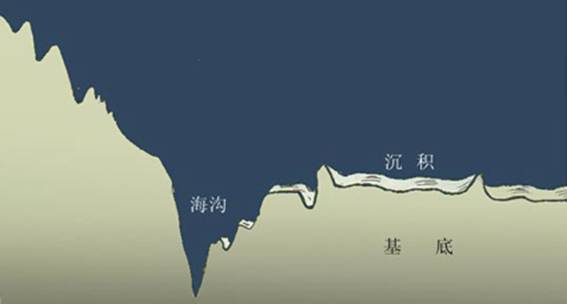(单词翻译:单击)
There was one other major problem with Earth theories that no one had resolved, or even come close to resolving. That was the question of where all the sediments went. Every year Earth's rivers carried massive volumes of eroded material—500 million tons of calcium, for instance—to the seas. If you multiplied the rate of deposition by the number of years it had been going on, it produced a disturbing figure: there should be about twelve miles of sediments on the ocean bottoms—or, put another way, the ocean bottoms should by now be well above the ocean tops. Scientists dealt with this paradox in the handiest possible way. They ignored it. But eventually there came a point when they could ignore it no longer.
地球理论还有一个谁也没有解决过的,或接近于解决过的问题。那就是,这么多沉积物都上哪里去了?地球上的江河每年要把大量被侵蚀的材料──比如,5亿吨钙──带进大海。要是你把这一过程的年数乘以沉积速度,你就会得出一个惊人的数字:海底应该有一层大约20公里厚的沉积物──或者换一种说法,海底现在应该远远高出海面。科学家们以最简单的办法来对付这个不可思议的问题──不予理会。但是,终于到了一个时刻,不理会已经不行了。
In the Second World War, a Princeton University mineralogist named Harry Hess was put in charge of an attack transport ship, the USS Cape Johnson. Aboard this vessel was a fancy new depth sounder called a fathometer, which was designed to facilitate inshore maneuvers during beach landings, but Hess realized that it could equally well be used for scientific purposes and never switched it off, even when far out at sea, even in the heat of battle. What he found was entirely unexpected. If the ocean floors were ancient, as everyone assumed, they should be thickly blanketed with sediments, like the mud on the bottom of a river or lake. But Hess's readings showed that the ocean floor offered anything but the gooey smoothness of ancient silts.
第二次世界大战期间,普林斯顿大学的矿物学家哈里·赫斯负责指挥一条攻击运输舰“约翰逊角”号。舰上配有一台高级的新型测深器,名叫回声测深仪,以便在海滩登陆过程中操作更加方便。但是,赫斯意识到,这台仪器也可以用于科学目的,因此即使到了远海,即使在战斗最激烈的时候,也从不关掉。他的发现完全出人意料。如果海底像大家认为的那样很古老,那么就该有一层厚厚的沉积物,就像河底或湖底的淤泥那样。但是,赫斯的测量结果表明,海底只有一层又黏糊又平滑的古代泥沙。


